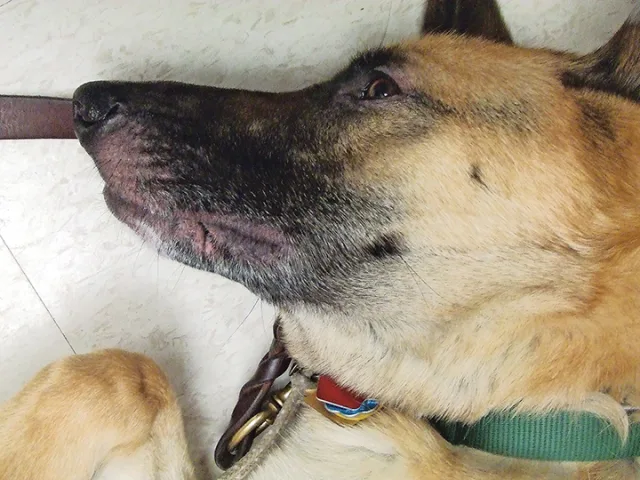Simplifying Dietary Elimination Trials
Alison Diesel, DVM, DACVD, Texas A&M University
In the literature
Favrot C, Bizikova P, Fischer N, Rostaher A, Olivry T. The usefulness of short-course prednisolone during the initial phase of an elimination diet trial in dogs with food-induced atopic dermatitis. Vet Dermatol. 2019;30(6):498-e149.
The Research …
Although less common than atopic dermatitis caused by environmental allergens, cutaneous adverse food reaction (ie, food allergy, food-induced atopic dermatitis) is an important differential diagnosis in a pruritic dog when infections, including parasitic infections, have been ruled out. Diagnosis is typically based on the results of an 8- to 12-week dietary elimination trial, which can often be difficult to perform due to a lack of appropriate pet owner compliance.
The aim of this prospective study* was to evaluate the usefulness of administering a short course of oral prednisolone for a minimum of 2 weeks of a dietary elimination trial to reduce the time required to confirm or refute a food allergy diagnosis. Fifty-three dogs with a diagnosis of nonseasonal atopic dermatitis were fed a commercially available, extensively hydrolyzed diet and given anti-inflammatory dosages of prednisolone for ≥2 weeks. Two weeks after prednisolone was discontinued, 10 of the 53 dogs did not show signs of flare-up; these dogs were then challenged with their original diets and experienced relapse of signs. When the extensively hydrolyzed diet was reintroduced to this group, clinical signs improved. These dogs were subsequently diagnosed with food-induced atopic dermatitis. Median duration of the food elimination trial for the food-allergic dogs was 28 days (range, 28-44 days). In the other 43 dogs, pruritus could not be controlled without concurrent prednisolone administration and clinical signs did not worsen with diet challenge. In these dogs, elimination diet trials lasted a median of 60 days (range, 54-70 days).

German shepherd dog with cutaneous adverse food reaction. This dog had concurrent environmental allergy. Both food and environmental triggers exacerbate clinical signs of atopic dermatitis.
… The Takeaways
Key pearls to put into practice:
Historically, atopic dermatitis has been referred to as allergic skin disease triggered by environmental allergens. There is growing evidence that supports food as a possible trigger for some dogs with atopic dermatitis.1 In these dogs, pruritic skin disease with clinical characteristics of atopic dermatitis can develop with ingestion of various foods. Canine food allergy is believed to involve both immunologic and nonimmunologic pathomechanisms of development2; this could support shared immunologic responses in the conditions previously considered to be separate.
A strict dietary elimination trial remains the gold standard for diagnosing food allergy in dogs and cats. A recent literature review evaluated information on in vitro and in vivo testing for food allergies in veterinary species3; results lack support for any evaluated test other than diet trial. However, these trials can be frustrating for owners and often lead to noncompliance. Concurrent administration of anti-inflammatory steroids as described in the present study may allow for reduced time to achieve a diagnosis in truly food-allergic dogs.
Reducing inflammation is key when managing allergic skin disease in dogs and cats. Focusing on this in the early stages of dietary elimination trials can help dampen pathways that lead to itch and inflammation. Steroids have a broad effect with regard to inflammation; whether these same effects would be noted with more targeted therapeutics (eg, oclacitinib, lokivetmab) is unknown.
*Royal Canin provided free food and contributed to additional costs associated with study follow-up.